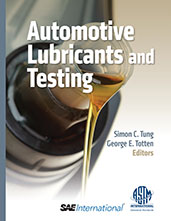Technical Paper
A Coupled Methodology for Modeling the Transient Thermal Response of SI Engines Subject to Time-Varying Operating Conditions
1997-05-19
971859
A comprehensive methodology for predicting the transient thermal response of spark-ignition engines subject to time-varying boundary conditions is presented. The approach is based on coupling a cycle-resolved quasi-dimensional simulation of in-cylinder thermodynamic events with a resistor-capacitor (R-C) thermal network of the various component and fluid interactions throughout the engine and exhaust system. The dynamic time step of the thermal solution is limited by either the frequency of the prescribed time-dependent boundary conditions or by the minimum thermal time constant of the R-C network. To demonstrate the need for fully-coupled, transient thermodynamic and heat transfer solutions, model behavior is first explored for step-change and staircase variations of engine operating conditions.

